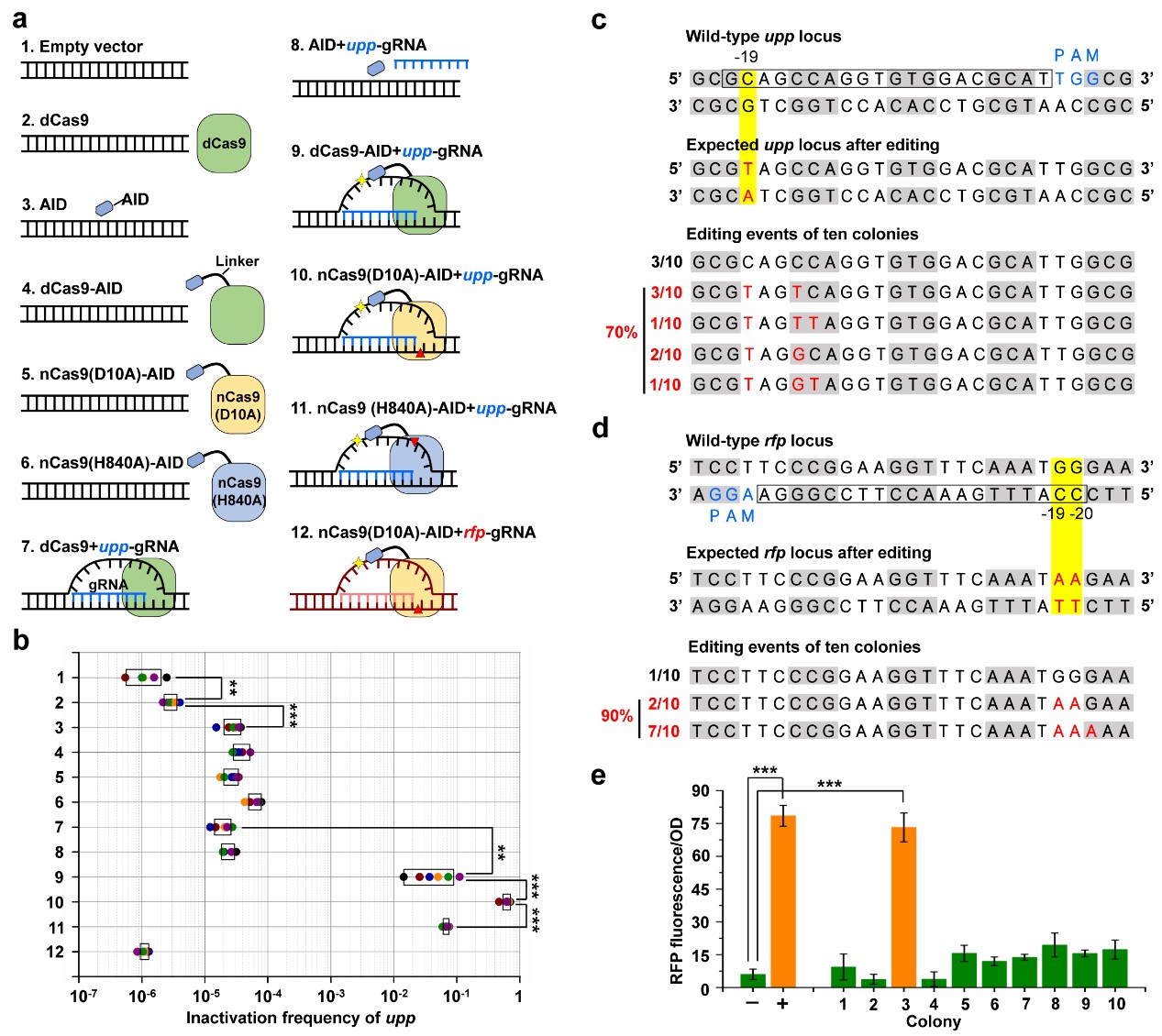Researchers developed multiplex automated genome editing method
The clustered regularly interspaced short palindromic repeats (CRISPR) and their CRISPR-associated proteins (Cas) have revolutionized the field of bacterial genome engineering. However, due to the high lethality of CRISPR/Cas systems and the low homologous recombination efficiency of most bacteria, multiplex and automated genome editing is still challenging, which hinders genetic engineering of bacteria.
Recently, A collaborative research has been done by three Laboratories at Tianjin Institute of Industrial Biotechnology (TIB), Chinese Academy of Sciences, Systems & Synthetic Biotechnology Laboratory led by Prof. ZHENG Ping, Systems Biological Analysis Laboratory led by Prof. SUN Jibin and High-Throughput New Molecule Biosynthesis Laboratory led by Prof. WANG Meng, which developed a multiplex automated Corynebacterium glutamicum base editing method (MACBETH). Taking advantage of the precise target recognition capability of CRISPR/Cas9 system and the C to T conversion capability of activation-induced cytidine deaminase (AID), base editing on the chromosome was achieved with a high efficiency of over 90%. One application of MACBETH was to deactivate multiple genes simultaneously by generating early stop codons. Using an integrated robotic system in TIB, MACBETH was automated, facilitating high-throughput and automated plasmid construction, genome editing, mutant screening and phenotype verification. It is estimated that MACBETH would enable the construction of thousands of rationally engineered strains per month. As a proof of concept demonstration, MACBETH was used to construct an arrayed gene inactivation library of 94 transcription factors of C. glutamicum with 100% success rate. No DNA templates are required for MACBETH, which will lower the cost of large-scale genome editing. Because only early stop codons are generated, MACBETH is applicable to construct genome-scale gene inactivation library of C. glutamicum without affecting the genome structure. In conclusion, MACBETH would be a powerful tool for multiplex and automated bacterial genome editing in future studies and industrial applications.
The work entitled “MACBETH: multiplex automated Corynebacterium glutamicum base editing method” has been published in Metabolic Engineering . Dr. WANG Yu and M.S. LIU Ye, assistant researchers of TIB, are co-first authors of this paper. This work was supported by the National Natural Science Foundation of China, the Key Project of Chinese Academy of Sciences, the Key Research Program of the Chinese Academy of Sciences.

Programmable base editing by MACBETH in C. glutamicum.(Image by TIB)
(a) Schematic representation of the complex forms of Cas9, gRNA, the target DNA, and AID examined in this study. (b) Editing efficiencies by different Cas9-AID-gRNA complex. (c) Genotype of upp-edited mutants. (d) Genotype of rfp-edited mutants. (e) Phenotype of rfp-edited mutants.
Contact:Prof. ZHENG Ping
Tianjin Institute of Industrial Biotechnology, Chinese Academy of Sciences.
Email: zheng_p@tib.cas.cn
